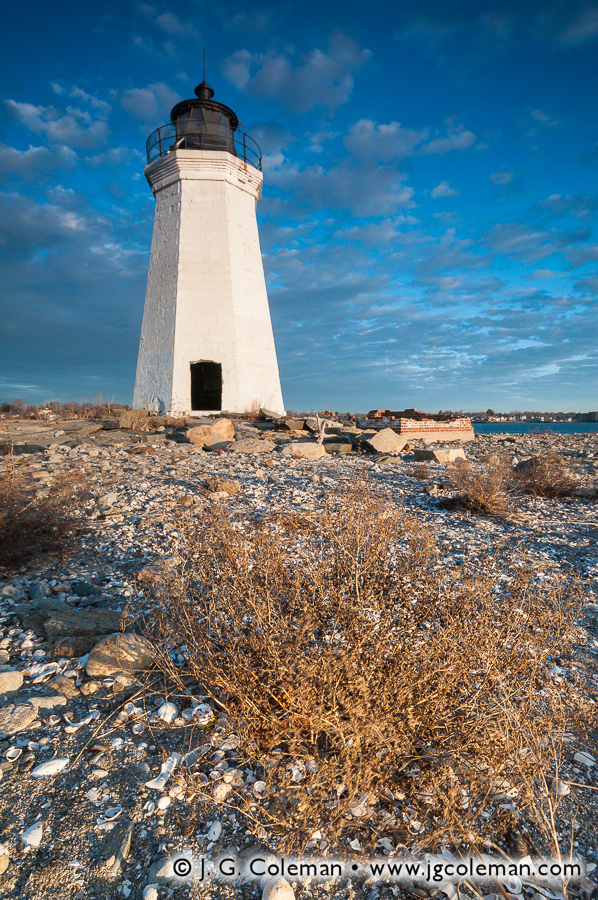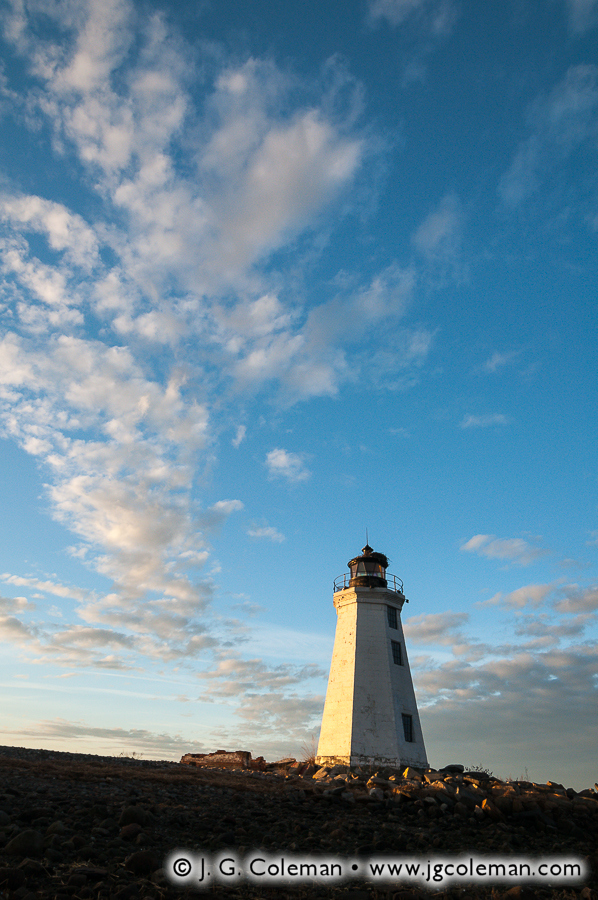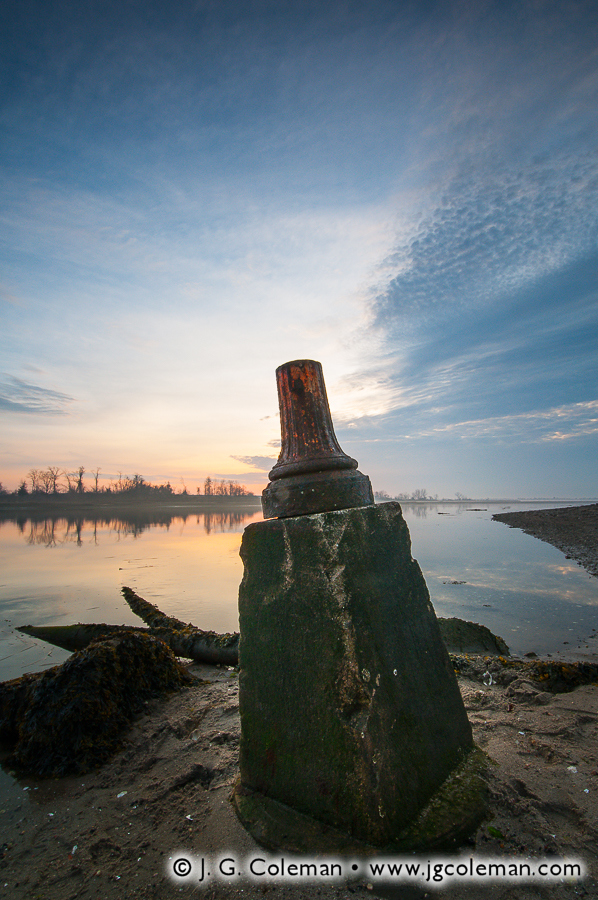
Pleasure Beach on Long Beach Peninsula, Bridgeport, Connecticut
© 2014 J. G. Coleman
“It is said that time is unrelated to everything else. It goes on and on, unnoticing of our actions, our falls, our triumphs. Who’s to care then, if time does not remember us? It flies by, fleeting, inattentive and disinterested in any occupants of this earth. What are we, then, if time thinks so little of everyone it passes?”
Abandoned places possess a unique allure for those who are receptive to the stories that resonate in the hollows of their vacant buildings and crumbling foundations. Few places in Connecticut so strongly embodied the “post-apocalypse” aesthetic as Pleasure Beach, a deserted amusement park and cottage village which stood vacant for nearly two decades at the end of a two-mile peninsula on Long Island Sound. My newly-released work features the quiet landscapes of this ghost town and seeks out untroubled beauty in a place where the rhythms and sounds of mankind have been extinguished.
Beginning in the late 1890s, Pleasure Beach emerged as a modest amusement park and beach cottage community situated at the end of a long peninsula that extended westward from the coast of Stratford into Bridgeport Harbor. Although it was initially accessible only by ferry, a swing bridge was eventually constructed in the 1920s which connected Pleasure Beach to the coast of Bridgeport and permitted easy access for pedestrians and automobiles alike.
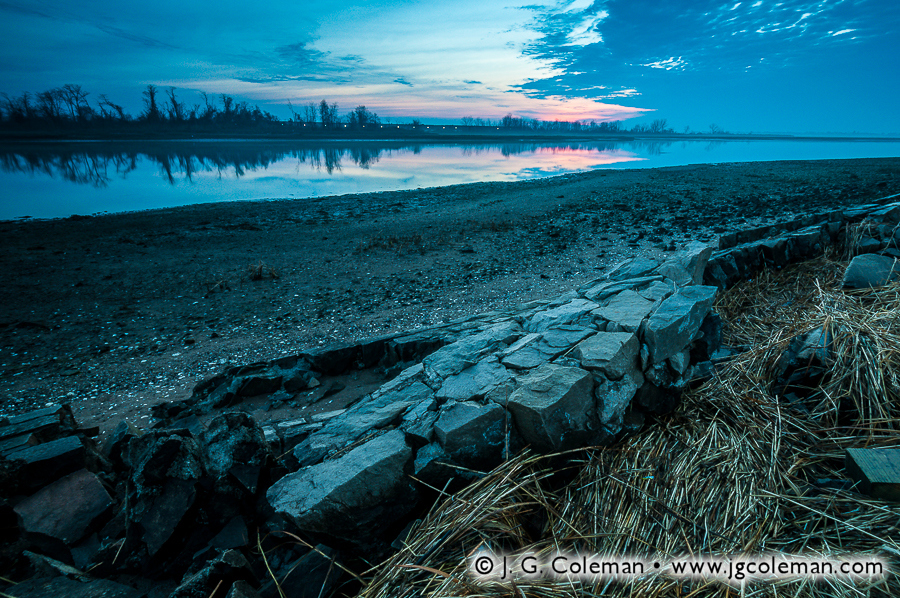
Pleasure Beach on Long Beach Peninsula, Bridgeport, Connecticut
© 2014 J. G. Coleman
The next five decades proved tumultuous for the amusement park. Throughout the years, it would enjoy periods during which it was wildly successful, only to grow run-down and be sold off when shifts in economy or culture led to declines in attendance. But whenever Pleasure Beach reached the brink of abandonment, it seemed that another owner would step up and take the reins for some number of years. When a fire ripped through the park in the 1950s, its days as a proper amusement park were numbered, but a beer garden, dance pavilion, playhouse and other disparate attractions remained and continued to draw some visitors for another two decades. When the dance pavilion succumbed to fire in the 1970s, and with the rest of the structures beginning to show their age, the 80-year legacy of Pleasure Beach finally came to a close.
For owners of the dozens of cottages adjacent to the defunct amusement park, though, the closure may perhaps have been a welcome source of quietude. After all, they continued to enjoy their seaside properties for another two decades, accessing them via the same old, trusty swing bridge that once serviced Pleasure Beach. But even this lingering human presence would not last. In an all too common scenario for Pleasure Beach, fire engulfed the mid-section of the bridge in 1996, destroying the only road to the cottages. With municipal emergency vehicles no longer able to access the area, the cottagers were evicted. They hauled away whatever of their belongings they could by barge and the entire neighborhood of cottages, alive with summertime joy just a year earlier, quite suddenly became Connecticut’s largest ghost town.
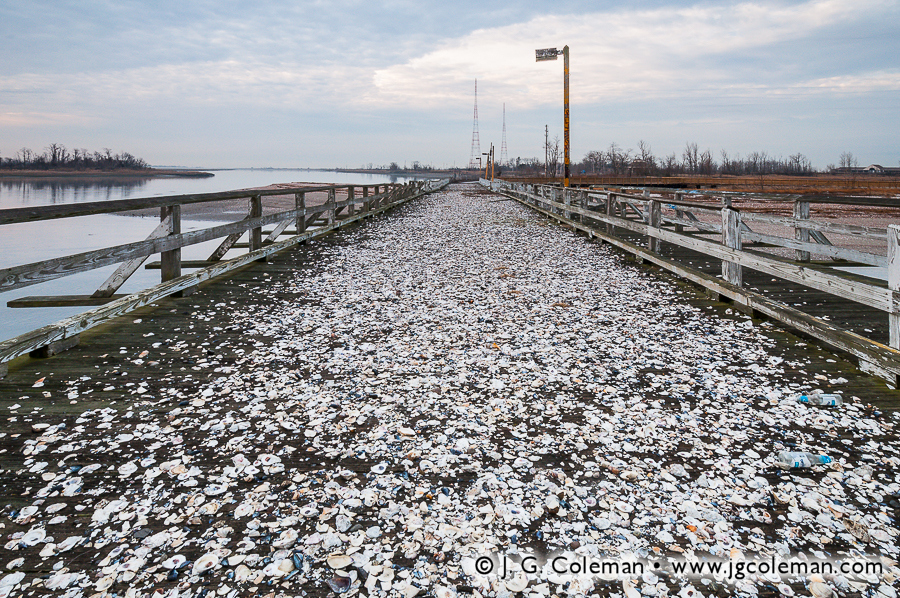
Pleasure Beach on Long Beach Peninsula, Bridgeport, Connecticut
© 2014 J. G. Coleman
My piece, Dominion of the Gulls, was taken upon the stub of the decaying swing bridge that still extends from Pleasure Beach towards the Bridgeport mainland (the charred mid-section of the bridge was directly behind me). Ever since Pleasure Beach was abandoned almost two decades ago, clever herring gulls have been cracking open clams, oysters and snails by dropping them upon the bridge decking from dozens of feet in the air. Some of my other works above, such as What Remains of the Joy (top) and A Wall Overtaken, portray further ruins such as broken lamp posts and crumbling seawalls which are commonplace along the beaches.
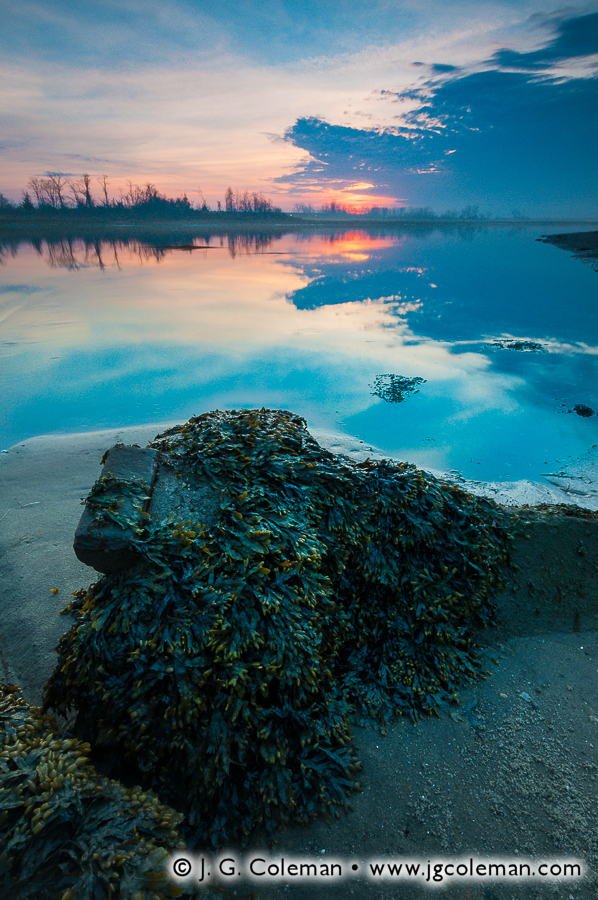
Lewis Gut beside Pleasure Beach & the Long Beach Peninsula, Bridgeport, Connecticut
© 2014 J. G. Coleman
But despite the unfortunate circumstances surrounding the abandonment of Pleasure Beach, there’s no doubt that nearly two decades of isolation from the densely populated mainland has returned this barrier peninsula to a wild state. My pieces, Dawn Over Lewis Gut and Lewis Gut, Tide Withdrawn, celebrate the natural beauty that has persisted at Pleasure Beach even as time and vandalism took its toll upon the structures. For the benefit of the inquisitive, it’s worth mentioning that Lewis Gut is the narrow cove which separates Pleasure Beach and the Long Beach Peninsula from the mainland of Stratford. The term “gut” for a cove or bay always struck me as somewhat odd, though I’ve come to discover that it is in no way without precedent.
For sure, the story of Pleasure Beach could’ve ended with its abandonment in 1996, but both Bridgeport and Stratford have shown renewed interest in the land over recent years. For its own part, Stratford went ahead and demolished the dozens of decaying cottages adjacent to Pleasure Beach back in 2011, eventually selling its stake in the peninsula to the federal government for preservation as valuable breeding habitat for shorebirds. Bridgeport has gone a different direction, reopening the grounds of Pleasure Beach as a town park. In fact, as of June 28, 2014, ferries began shuttling visitors back and forth between the mainland and the newly-constructed dock on the tip of the peninsula.
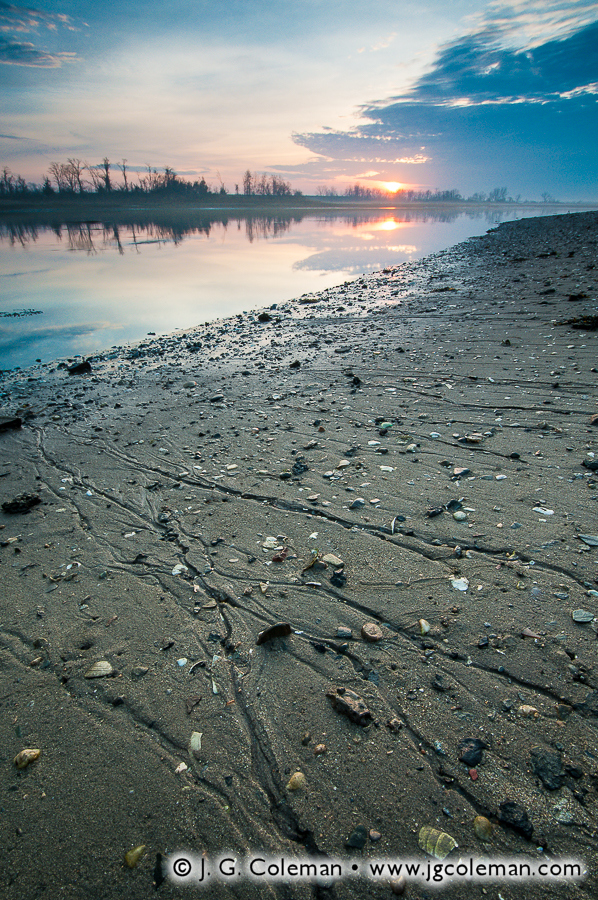
Lewis Gut beside Pleasure Beach and Long Beach Peninsula, Bridgeport, Connecticut
© 2014 J. G. Coleman
Between reanimating the peninsula with sounds of summertime joy and setting aside a large swath as conservation land, one could hardly imagine a more positive direction for the latest chapter in the story of Pleasure Beach. That being said, I would be lying if I didn’t admit at least a hint of regret that Connecticut’s most distinctive ghost town —and, for that matter, one of its most peculiar wildland areas— has suddenly become quite a bit more tame and pedestrian. In this day in age, as Connecticut is further developed and quiet, out-of-the-way places seem to be vanishing, the notion of a modern ghost town of any sort existing in the state seems preposterous. For better or worse, civilization in Southern New England abhors a vacuum and one would think that such a large expanse of beachfront property would have been swallowed up by a developer long ago. Indeed, its remarkable that Pleasure Beach persisted so long in its barren state in spite of the hustle and bustle on the nearby mainland. For well over a century, though, Pleasure Beach has been characterized by change and by ever-repeating patterns of renewal and exhaustion. Seeing this place revived from its ruins may be bittersweet in a certain sense, but its a fitting addition to the saga of Pleasure Beach.
For those who are curious, the photographs seen here were produced in March 2014, roughly three months before Pleasure Beach was reopened for the first time in 18 years.
Want to See More?
- To buy a fine art print of the pieces seen above, or to see other works from this location, visit the Pleasure Beach & Long Beach Park section of my online galleries.


